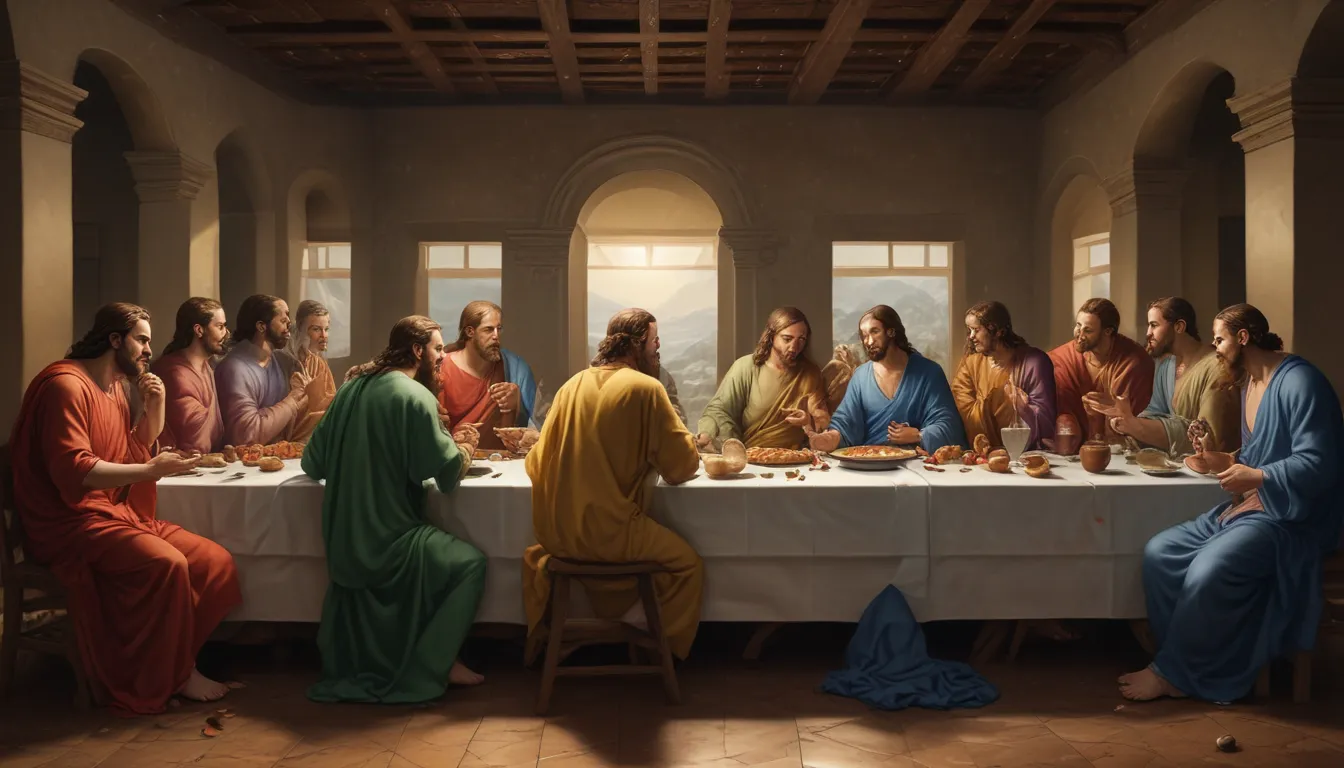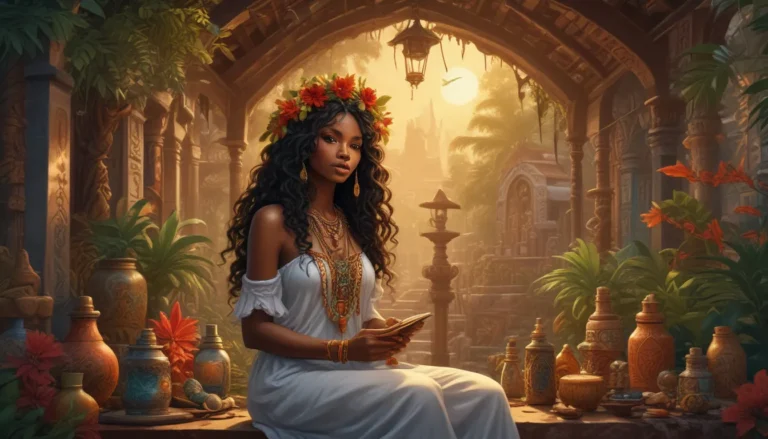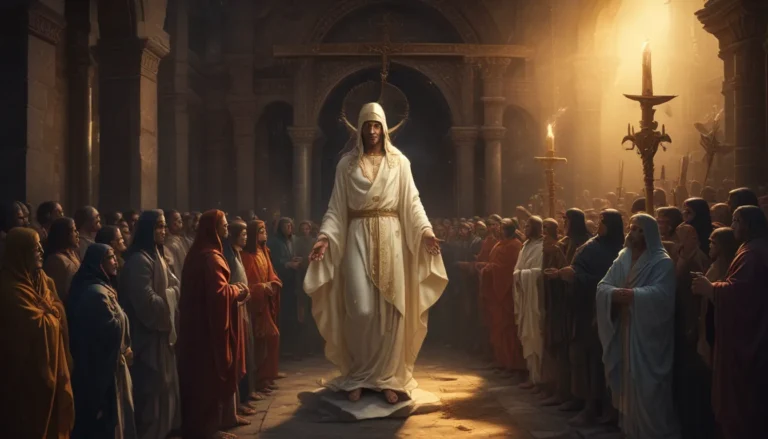The images in our articles may not match the content exactly. They are used to grab your attention, not to show the exact details in the text. The images complement the text but do not replace it.
When it comes to iconic events in Christian history, The Last Supper stands out as a pivotal moment that has captured the hearts and minds of believers and non-believers alike. Depicting the final meal Jesus shared with his disciples before his crucifixion, this event has been immortalized in art, literature, and religious teachings, shaping our understanding of faith and sacrifice. Join us as we delve into 34 amazing facts about The Last Supper, shedding light on its historical, cultural, and spiritual significance, and unraveling the mysteries that have surrounded it for centuries.
Leonardo da Vinci’s Masterpiece:
- The Last Supper, painted by Leonardo da Vinci, is a famous artwork located in Milan, Italy, and has inspired countless interpretations and restoration efforts, captivating audiences worldwide for centuries.
- This iconic painting has faced deterioration, sparked debates, and been featured in educational materials, showcasing its enduring impact on popular culture and its timeless relevance across diverse artistic expressions.
The Last Supper Unveiled:
One of the most renowned works of art in the world, The Last Supper was painted by the legendary artist Leonardo da Vinci. This masterpiece captures the emotional moment when Jesus reveals that one of his disciples will betray him, immortalizing the disciples’ reactions as they process this shocking revelation, making it a compelling and emotive piece of art.
A Journey to Milan:
Housed in the Convent of Santa Maria delle Grazie in Milan, Italy, The Last Supper’s location adds to the artwork’s allure, drawing visitors from around the globe to witness this extraordinary piece firsthand.
The Struggle Against Time:
Due to various environmental factors and the fragility of the painting’s medium, The Last Supper has faced significant deterioration over the years. Efforts to preserve and restore this masterpiece have been ongoing, highlighting the importance of safeguarding cultural treasures for future generations.
The Last Supper in Popular Culture:
The enduring impact of The Last Supper is evident in its frequent reproduction and references in popular culture. From parodies to homages, this painting has left an indelible mark on the artistic landscape, cementing its status as a cultural touchstone.
Interpreting The Last Supper:
Art enthusiasts, scholars, and theologians have delved into the symbolism and meaning behind The Last Supper, offering a myriad of interpretations that contribute to its enduring mystique and fascination.
Beyond Visual Art:
The profound impact of The Last Supper extends beyond the realm of visual art, influencing creators in literature, music, and film. Its resonance across diverse artistic expressions underscores its timeless relevance and significance.
Sparking Debates and Controversies:
The enigmatic nature of The Last Supper has sparked debates and controversies, with experts and enthusiasts engaging in discussions about its historical context, artistic techniques, and hidden symbolism, adding layers of intrigue to this iconic masterpiece.
Restoration for Posterity:
Given its delicate state, The Last Supper has been the focus of meticulous restoration efforts aimed at preserving its integrity and ensuring its longevity for future generations to appreciate and admire.
A Valuable Educational Resource:
Educators and students alike have utilized The Last Supper as a valuable educational resource, using its rich historical and artistic significance to inspire learning and critical thinking.
A Testament to Timelessness:
Despite the passage of centuries, The Last Supper continues to captivate audiences worldwide, serving as a testament to the enduring power of art to transcend time and resonate across diverse cultures and generations.
Masterpiece Across Mediums:
From literature to music, and film, The Last Supper has inspired numerous artistic endeavors, showcasing its timeless relevance and importance in various creative expressions.
Unraveling The Mysteries:
Explore the thought-provoking theories, historical mysteries, and little-known details surrounding The Last Supper, from movie adaptations to hidden meanings behind the painting itself. Delve into the depths of this timeless piece of art and uncover new insights about its significance.
Conclusion:
As we journey through the 34 amazing facts about The Last Supper, we gain a deeper understanding of its historical, cultural, and religious importance. Each fact unveils a layer of intrigue and reverence, shedding light on this iconic event that continues to captivate and inspire people worldwide. The Last Supper stands as a profound symbol of faith, sacrifice, and unity, leaving a lasting legacy that transcends time and resonates across generations.
FAQs
What is the significance of The Last Supper in [religion]?
The Last Supper holds great significance in [religion] as it marks the final meal that Jesus shared with his disciples before his crucifixion, symbolizing sacrifice, communion, and the establishment of the Eucharist.
Why is The Last Supper considered a masterpiece?
The Last Supper is considered a masterpiece due to its artistic brilliance, depth of emotion, and storytelling conveyed by Leonardo da Vinci. Its composition, symbolism, and attention to detail make it a remarkable work of art that continues to captivate audiences centuries later.
Your Feedback Matters:
Our commitment to delivering trustworthy and engaging content is at the heart of what we do. Each fact on our site is contributed by real users like you, bringing a wealth of diverse insights and information. Trust in our dedication to quality and authenticity as you explore the captivating world of art and history with us.






